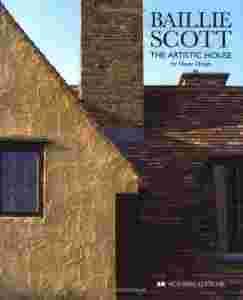Baillie Scott’s long career spanned the years from 1892 to 1939 – several ages in architecture. He may be considered a third–generation Arts and Crafts architect, who joined the movement after it had become well established and took its ideas to everyman. He invented a new type of small house by opening up a plan around a spacious house–place or hall and extending the interior into the garden. These airy little houses, with their intimate alcoves and sunny verandas, captured William Morris’s vision: ‘Simplicity of life, even the barest, is not a misery, but the very foundation of refinement: a sanded floor and whitewashed walls, and the green trees, and flowery meads… will turn all “operatives” into workmen, into artists, into men.’
It is clear that Baillie Scott made a significant contribution to twentieth–century architecture. The main themes of his agenda – the development of alternative small houses for the average householder; open and spacious planning, continuity of internal and external space, exploration of the rich textures of materials – are as important today as they were in the early years of the century. The work of Baillie Scott effectively ensured an important and enduring relevance for Morris’s legacy.
This book includes many newly commissioned photographs of Baillie Scott’s houses, as well as original drawing and new research. By looking at his writing and revisiting his buildings – some previously unknown – it makes available the work of an important architect of the Arts and Crafts movement. It reveals for the first time the beauty of Baillie Scott’s architectural works and the fascinating breadth of his theory and practice.

